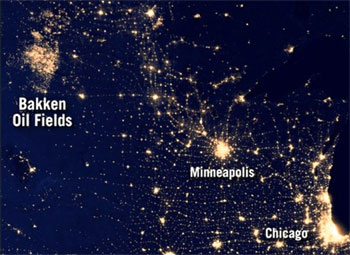The EPA announced goals for reducing US methane emissions from the oil and gas industry today, setting a target of cutting them 40-45% by 2025 from 2012 levels.
Methane emissions are responsible for roughly 10% of US greenhouse gases – about a third comes from the oil and gas industry (the rest comes from factory farms – which are completely unregulated – landfills and waste treatment plants). Although methane is short-lived in the atmosphere, it is at least 20 times more potent than carbon.
Amazingly, satellites show a giant methane plume – the size of Delaware – hovering over the American southwest. It’s persisted since around the turn of the century in this most intensive area for coalbed methane production – where natural gas is extracted coal – an extremely methane-heavy process. There are also 40,000 gas wells there and lots of pipelines.
EPA – which has been criticized for under-estimating methane emissions – projects they will be 25% higher by 2025 without steps on control.
Measures to meet the goals will be proposed this summer and finalized in 2016. Although it’s notable that EPA is targeting the entire system – leaks from wells, pipelines and valves across drilling, production and transportation – rules will only apply to new and modified oil and gas systems – not existing systems – which are currently causing the problem.
For existing sources of emissions, EPA will depend on voluntary cooperation from the industry, until it gets around to regulations some time in the future.
Flaring can be seen from space:

In terms of concrete action, EPA only announced expanded reporting requirements, and here too the industry is in charge. Companies will have to track and report on emissions throughout the system – currently reporting is limited to flaring from wells. The industry will measure the emissions – no independent verification required – a likely reason for its under-estimates.
Last year, President Obama released "Strategy to Reduce Methane Emissions," which got the ball rolling for EPA’s announcement today. Since then, EPA released rules for methane emissions from new landfills and the dairy industry agreed to pursue a Biogas Roadmap.
Since then, the Department of Energy announced it would cut methane emissions from pipelines – which are worse than from flaring. Steps focus on creating efficiency standards for equipment and incentives to modernize distribution networks. The Department of Transportation will address methane leaks as part of pipeline safety standards this year.
The Interior Department’s Bureau of Land Management will propose separate standards this spring to reduce methane leaks from oil and gas wells on federal land. Previously proposed rules were too weak because they were based on ALEC’s fracking standards.
Capturing methane has economic value for the industry because it can be re-used or sold, so what’s the industry waiting for? Last year, the natural gas industry said they would stop flaring in North Dakota by the end of the decade. The wasteful practice sends about 29% of fracked gas into the air, worth about $1 billion a year.
In 2012, EPA laid the foundation for action when it proposed air pollution standards for the industry, to reduce volatile organic compounds (VOCs) as well as methane emissions. Those too will be finalized in 2016.
The US is giving a $15 million grant to the World Bank to kick-start its "carbon auction facility" – a cap-and-trade program for major methane emitters – factory farms, landfills and waste treatment facilities.
